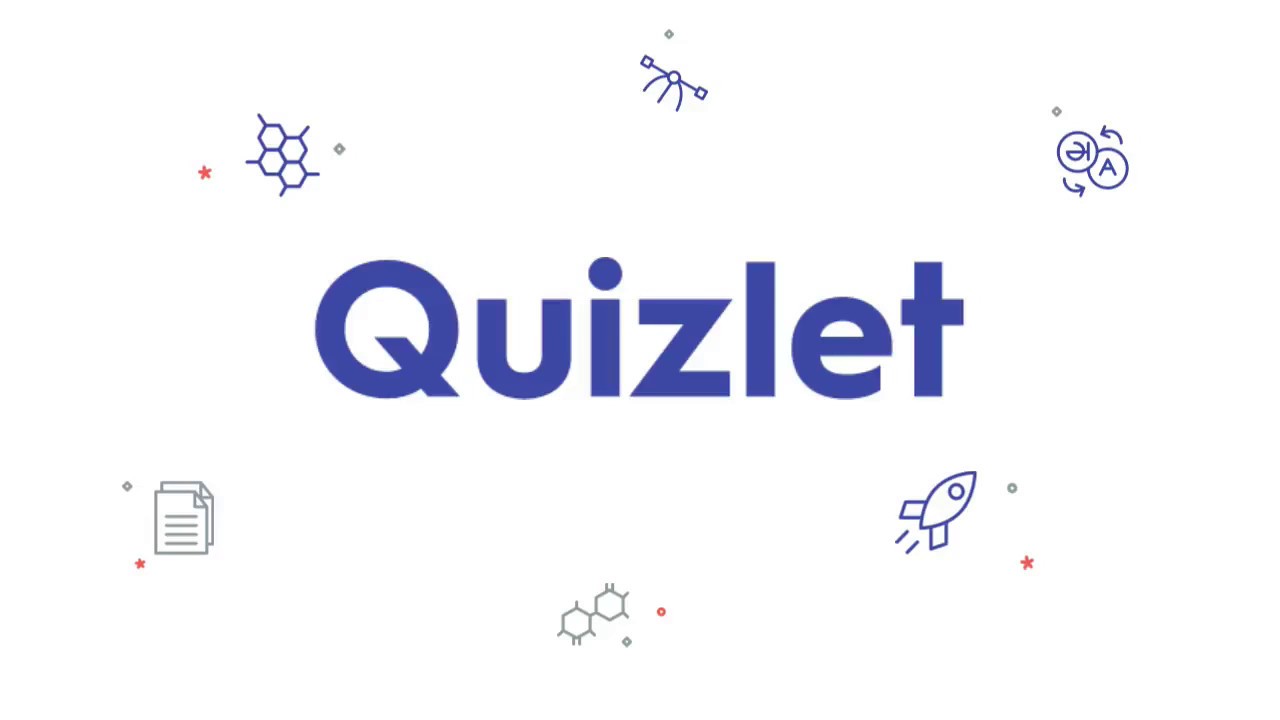Hello everyone and welcome back to my blog where I love to share my occasions with all of you. Today, I wanted to brief you about this super cool project we did in my social studies class! Stay tuned to find out!
In social studies, we were learning about migration and Polynesian migration. We researched how Polynesian migrants navigated from one place to another. One of our tasks before doing that was how the earlier migrators travelled from Hawaii to Aotearoa.
After making our boats we sailed our boats, we used currents and wind to make the waka move. We had two people blowing everyone’s waka because they didn’t make their boat. We first did it without the currents, we just did it with the two people to blow the boats. Then the teacher decided to turn one of the taps on to make the currents go towards the waka.
Hypothesis –
I hypothesised that the boat would float, and would not sink.
2nd Hypothesis – The current on the coaster will help the waka float better, without the current it would not float well.
Supplies –
Long toothpick sticks – Woolworths
Red linen fabric – The teacher already had some
Super glue – The warehouse
Popsicle sticks – The warehouse
String – The warehouse
Cardboard – Already have at school
Some bubble wrap – Already have at school
Glue gun – Already at school
Why we used the materials –
We used Long toothpick sticks for the sail, we used it so it stayed in place.
We used red linen fabric for the sail, we chose the colour red so it stands out more and it would look like the picture we got inspired by.
My group used popsicle sticks to make the hull, and we also used popsicle sticks for the rails and some of the floor. The popsicle sticks helped us so much with the hull and the rails on the side.
We used super glue in some of the parts because it was dangerous and our hands nearly stuck onto them, my friend Felice got her finger stuck onto the cardboard so we decided to use the hot glue gun instead. Plus the super glue was so liquidy that it was running out fast.
We used string for some decoration on the sail, we were planning to add more string but we didn’t have enough time because we decided to add the string at the end. We also used the string to make the sail straight.
Then we used cardboard for the base/floor.
Then some bubble wrap for the bottom of the hull so it will flat and the wood which is in the popsicle sticks won’t soak and sink.
What we did –
Our teacher assigned us the task of building Polynesian boats – how awesome is that?! Although we were supposed to work in groups of two, my group ended up with three amazing people which included myself – Felice, Ethan, and myself- Shreeya. We quickly got together and started planning our design, Ethan and Felice were in charge of getting everything we needed, and they did a splendid job at doing that. I was in charge of designing our boat and I did good as well. They loved the design.
Ordering –
We were pretty excited about the project and eager to get started, and we showed our plan and supplies to our teacher, who was equally impressed. She asked us to share the code from the app we used to order our supplies. My group was so excited for the supplies to come.
Time to build –
We started building our boat in our social studies class, and it was a lot of fun! We worked together as a team, sharing ideas and working hard to make sure everything was just right. After a few days of hard work, we finally finished our boat, and it looked amazing!
What went well and not –
What went well: We were all collaborating well together, we were doing teamwork, and we were listening to each other.
What didn’t go well: We should hear everyone’s thoughts before saying ” This thought is the best we should do it.” We should listen to each other sometimes and not try to acknowledge people’s great ideas.
What changes would you make?
I would change the cardboard for something else because the cardboard will suck the water in and make it heavy. If it gets heavier it would make the boat sink because of the pressure.
Did you enjoy it? –
I enjoyed making the waka a lot and learning about how the Māori got here. It was interesting learning how they got here and how they navigated here too.
Websites we used –
 The warehouse
The warehouse
 Woolworths
Woolworths
 Google Drawing – Boat design
Google Drawing – Boat design
 Google Docs – Items we needed
Google Docs – Items we needed
Conclusion –
I am so proud of my group for all the struggle and effort we put into our work, and I’m excited to share some photos of our boat and design with all of you. Overall, it was a fantastic experience, and I’m so glad we got to do it together.
Pictures & boat design, real boat design –
Design –

Pictures –




Real boat design –

I appreciate your dedication to reading and absorbing the information presented.
By Shreeya
Hello everyone and welcome back to my blog where I love to share my occasions with all of you. Today, I wanted to brief you about this super cool project we did in my social studies class! Stay tuned to find out!
In social studies, we were learning about migration and Polynesian migration. We researched how Polynesian migrants navigated from one place to another. One of our tasks before doing that was how the earlier migrators travelled from Hawaii to Aotearoa.
After making our boats we sailed our boats, we used currents and wind to make the waka move. We had two people blowing everyone’s waka because they didn’t make their boat. We first did it without the currents, we just did it with the two people to blow the boats. Then the teacher decided to turn one of the taps on to make the currents go towards the waka.
Hypothesis –
I hypothesised that the boat would float, and would not sink.
2nd Hypothesis – The current on the coaster will help the waka float better, without the current it would not float well.
Supplies –
Long toothpick sticks – Woolworths
Red linen fabric – The teacher already had some
Super glue – The warehouse
Popsicle sticks – The warehouse
String – The warehouse
Cardboard – Already have at school
Some bubble wrap – Already have at school
Glue gun – Already at school
Why we used the materials –
We used Long toothpick sticks for the sail, we used it so it stayed in place.
We used red linen fabric for the sail, we chose the colour red so it stands out more and it would look like the picture we got inspired by.
My group used popsicle sticks to make the hull, and we also used popsicle sticks for the rails and some of the floor. The popsicle sticks helped us so much with the hull and the rails on the side.
We used super glue in some of the parts because it was dangerous and our hands nearly stuck onto them, my friend Felice got her finger stuck onto the cardboard so we decided to use the hot glue gun instead. Plus the super glue was so liquidy that it was running out fast.
We used string for some decoration on the sail, we were planning to add more string but we didn’t have enough time because we decided to add the string at the end. We also used the string to make the sail straight.
Then we used cardboard for the base/floor.
Then some bubble wrap for the bottom of the hull so it will flat and the wood which is in the popsicle sticks won’t soak and sink.
What we did –
Our teacher assigned us the task of building Polynesian boats – how awesome is that?! Although we were supposed to work in groups of two, my group ended up with three amazing people which included myself – Felice, Ethan, and myself- Shreeya. We quickly got together and started planning our design, Ethan and Felice were in charge of getting everything we needed, and they did a splendid job at doing that. I was in charge of designing our boat and I did good as well. They loved the design.
Ordering –
We were pretty excited about the project and eager to get started, and we showed our plan and supplies to our teacher, who was equally impressed. She asked us to share the code from the app we used to order our supplies. My group was so excited for the supplies to come.
Time to build –
We started building our boat in our social studies class, and it was a lot of fun! We worked together as a team, sharing ideas and working hard to make sure everything was just right. After a few days of hard work, we finally finished our boat, and it looked amazing!
What went well and not –
What went well: We were all collaborating well together, we were doing teamwork, and we were listening to each other.
What didn’t go well: We should hear everyone’s thoughts before saying ” This thought is the best we should do it.” We should listen to each other sometimes and not try to acknowledge people’s great ideas.
What changes would you make?
I would change the cardboard for something else because the cardboard will suck the water in and make it heavy. If it gets heavier it would make the boat sink because of the pressure.
Did you enjoy it? –
I enjoyed making the waka a lot and learning about how the Māori got here. It was interesting learning how they got here and how they navigated here too.
Websites we used –
The warehouse Woolworths
Google Drawing – Boat design
Google Docs – Items we needed
Conclusion –
I am so proud of my group for all the struggle and effort we put into our work, and I’m excited to share some photos of our boat and design with all of you. Overall, it was a fantastic experience, and I’m so glad we got to do it together.
Pictures & boat design, real boat design –
Design –
Pictures –
Real boat design –
Video –
Hello everyone and welcome back to my blog where I love to share my occasions with all of you. Today, I wanted to brief you about this super cool project we did in my social studies class! Stay tuned to find out!
In social studies, we were learning about migration and Polynesian migration. We researched how Polynesian migrants navigated from one place to another. One of our tasks before doing that was how the earlier migrators travelled from Hawaii to Aotearoa.
After making our boats we sailed our boats, we used currents and wind to make the waka move. We had two people blowing everyone’s waka because they didn’t make their boat. We first did it without the currents, we just did it with the two people to blow the boats. Then the teacher decided to turn one of the taps on to make the currents go towards the waka.
Hypothesis –
I hypothesised that the boat would float, and would not sink.
2nd Hypothesis – The current on the coaster will help the waka float better, without the current it would not float well.
Supplies –
Long toothpick sticks – Woolworths
Red linen fabric – The teacher already had some
Super glue – The warehouse
Popsicle sticks – The warehouse
String – The warehouse
Cardboard – Already have at school
Some bubble wrap – Already have at school
Glue gun – Already at school
Why we used the materials –
We used Long toothpick sticks for the sail, we used it so it stayed in place.
We used red linen fabric for the sail, we chose the colour red so it stands out more and it would look like the picture we got inspired by.
My group used popsicle sticks to make the hull, and we also used popsicle sticks for the rails and some of the floor. The popsicle sticks helped us so much with the hull and the rails on the side.
We used super glue in some of the parts because it was dangerous and our hands nearly stuck onto them, my friend Felice got her finger stuck onto the cardboard so we decided to use the hot glue gun instead. Plus the super glue was so liquidy that it was running out fast.
We used string for some decoration on the sail, we were planning to add more string but we didn’t have enough time because we decided to add the string at the end. We also used the string to make the sail straight.
Then we used cardboard for the base/floor.
Then some bubble wrap for the bottom of the hull so it will flat and the wood which is in the popsicle sticks won’t soak and sink.
What we did –
Our teacher assigned us the task of building Polynesian boats – how awesome is that?! Although we were supposed to work in groups of two, my group ended up with three amazing people which included myself – Felice, Ethan, and myself- Shreeya. We quickly got together and started planning our design, Ethan and Felice were in charge of getting everything we needed, and they did a splendid job at doing that. I was in charge of designing our boat and I did good as well. They loved the design.
Ordering –
We were pretty excited about the project and eager to get started, and we showed our plan and supplies to our teacher, who was equally impressed. She asked us to share the code from the app we used to order our supplies. My group was so excited for the supplies to come.
Time to build –
We started building our boat in our social studies class, and it was a lot of fun! We worked together as a team, sharing ideas and working hard to make sure everything was just right. After a few days of hard work, we finally finished our boat, and it looked amazing!
What went well and not –
What went well: We were all collaborating well together, we were doing teamwork, and we were listening to each other.
What didn’t go well: We should hear everyone’s thoughts before saying ” This thought is the best we should do it.” We should listen to each other sometimes and not try to acknowledge people’s great ideas.
What changes would you make?
I would change the cardboard for something else because the cardboard will suck the water in and make it heavy. If it gets heavier it would make the boat sink because of the pressure.
Did you enjoy it? –
I enjoyed making the waka a lot and learning about how the Māori got here. It was interesting learning how they got here and how they navigated here too.
Websites we used –
The warehouse Woolworths
Google Drawing – Boat design
Google Docs – Items we needed
Conclusion –
I am so proud of my group for all the struggle and effort we put into our work, and I’m excited to share some photos of our boat and design with all of you. Overall, it was a fantastic experience, and I’m so glad we got to do it together.
Pictures & boat design, real boat design –
Design –
Pictures –
Real boat design –
Video –
Hello everyone and welcome back to my blog where I love to share my occasions with all of you. Today, I wanted to brief you about this super cool project we did in my social studies class! Stay tuned to find out!
In social studies, we were learning about migration and Polynesian migration. We researched how Polynesian migrants navigated from one place to another. One of our tasks before doing that was how the earlier migrators travelled from Hawaii to Aotearoa.
After making our boats we sailed our boats, we used currents and wind to make the waka move. We had two people blowing everyone’s waka because they didn’t make their boat. We first did it without the currents, we just did it with the two people to blow the boats. Then the teacher decided to turn one of the taps on to make the currents go towards the waka.
Hypothesis –
I hypothesised that the boat would float, and would not sink.
2nd Hypothesis – The current on the coaster will help the waka float better, without the current it would not float well.
Supplies –
Long toothpick sticks – Woolworths
Red linen fabric – The teacher already had some
Super glue – The warehouse
Popsicle sticks – The warehouse
String – The warehouse
Cardboard – Already have at school
Some bubble wrap – Already have at school
Glue gun – Already at school
Why we used the materials –
We used Long toothpick sticks for the sail, we used it so it stayed in place.
We used red linen fabric for the sail, we chose the colour red so it stands out more and it would look like the picture we got inspired by.
My group used popsicle sticks to make the hull, and we also used popsicle sticks for the rails and some of the floor. The popsicle sticks helped us so much with the hull and the rails on the side.
We used super glue in some of the parts because it was dangerous and our hands nearly stuck onto them, my friend Felice got her finger stuck onto the cardboard so we decided to use the hot glue gun instead. Plus the super glue was so liquidy that it was running out fast.
We used string for some decoration on the sail, we were planning to add more string but we didn’t have enough time because we decided to add the string at the end. We also used the string to make the sail straight.
Then we used cardboard for the base/floor.
Then some bubble wrap for the bottom of the hull so it will flat and the wood which is in the popsicle sticks won’t soak and sink.
What we did –
Our teacher assigned us the task of building Polynesian boats – how awesome is that?! Although we were supposed to work in groups of two, my group ended up with three amazing people which included myself – Felice, Ethan, and myself- Shreeya. We quickly got together and started planning our design, Ethan and Felice were in charge of getting everything we needed, and they did a splendid job at doing that. I was in charge of designing our boat and I did good as well. They loved the design.
Ordering –
We were pretty excited about the project and eager to get started, and we showed our plan and supplies to our teacher, who was equally impressed. She asked us to share the code from the app we used to order our supplies. My group was so excited for the supplies to come.
Time to build –
We started building our boat in our social studies class, and it was a lot of fun! We worked together as a team, sharing ideas and working hard to make sure everything was just right. After a few days of hard work, we finally finished our boat, and it looked amazing!
What went well and not –
What went well: We were all collaborating well together, we were doing teamwork, and we were listening to each other.
What didn’t go well: We should hear everyone’s thoughts before saying ” This thought is the best we should do it.” We should listen to each other sometimes and not try to acknowledge people’s great ideas.
What changes would you make?
I would change the cardboard for something else because the cardboard will suck the water in and make it heavy. If it gets heavier it would make the boat sink because of the pressure.
Did you enjoy it? –
I enjoyed making the waka a lot and learning about how the Māori got here. It was interesting learning how they got here and how they navigated here too.
Websites we used –
The warehouse Woolworths
Google Drawing – Boat design
Google Docs – Items we needed
Conclusion –
I am so proud of my group for all the struggle and effort we put into our work, and I’m excited to share some photos of our boat and design with all of you. Overall, it was a fantastic experience, and I’m so glad we got to do it together.
Pictures & boat design, real boat design –
Design –
Pictures –
Real boat design –
Video –
)


 Rewise colours
Rewise colours Checking the answers
Checking the answers Task
Task
 Images
Images


 The warehouse
The warehouse  Woolworths
Woolworths  Google Drawing – Boat design
Google Drawing – Boat design Google Docs – Items we needed
Google Docs – Items we needed









 Google Docs/documents – For my work
Google Docs/documents – For my work
